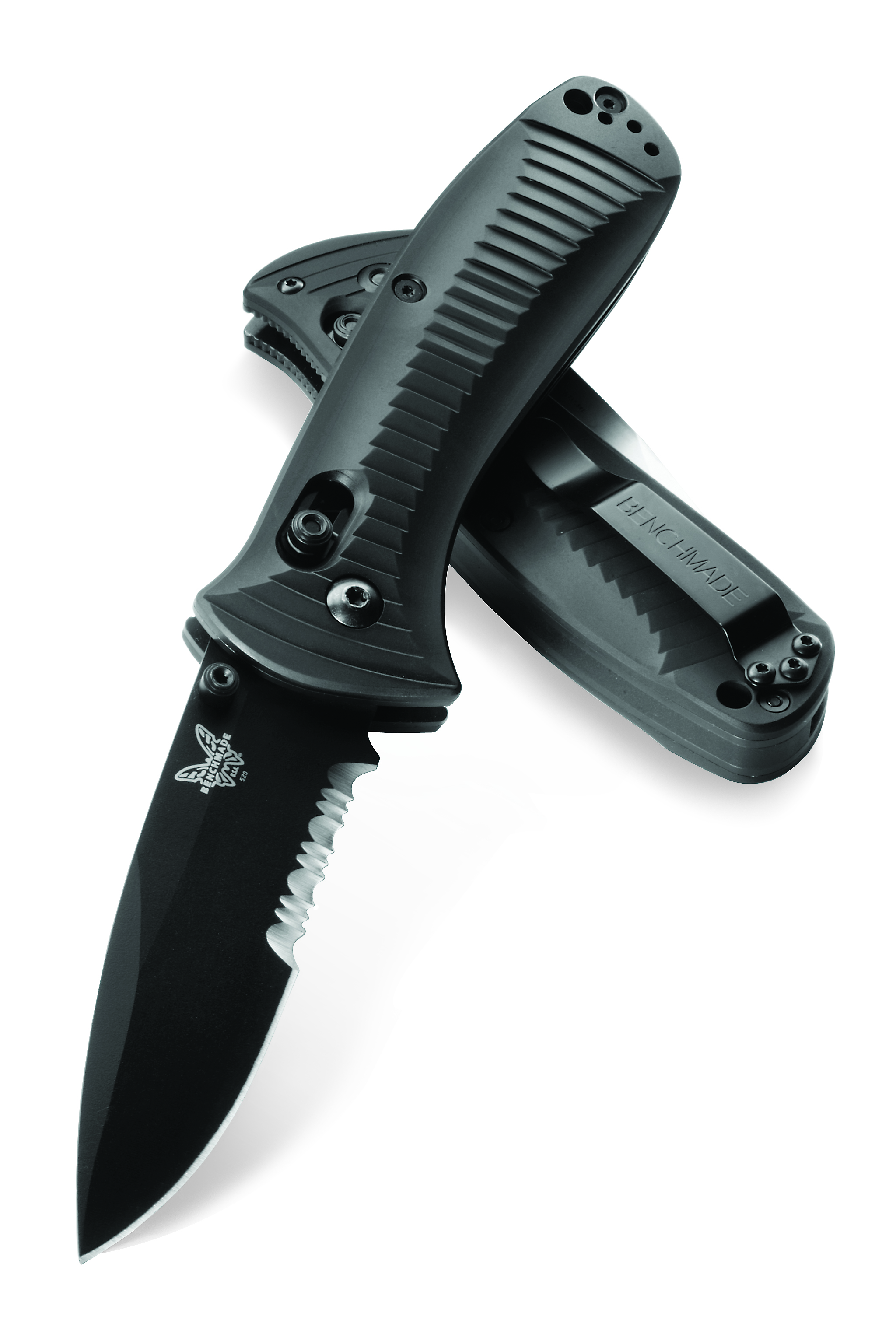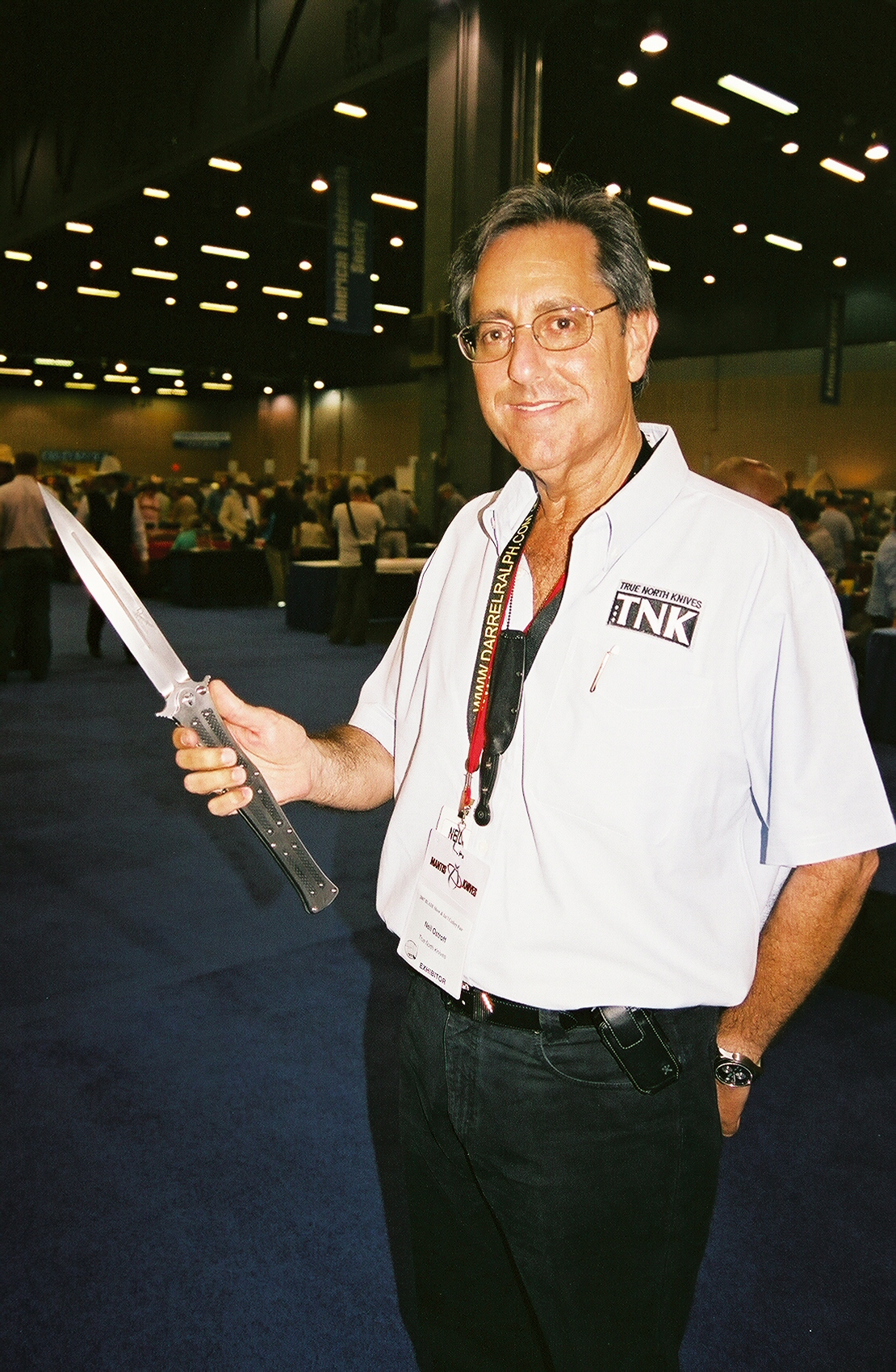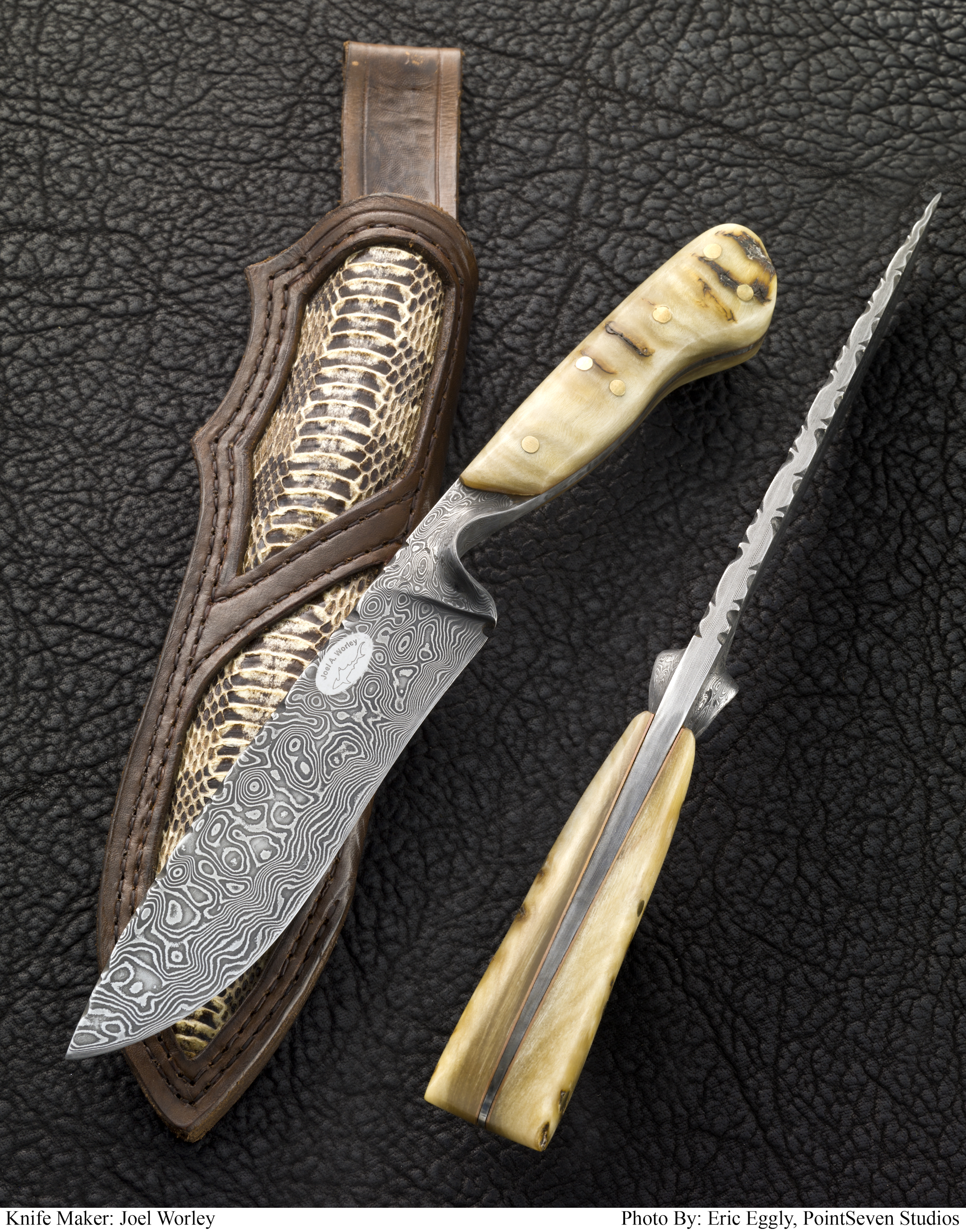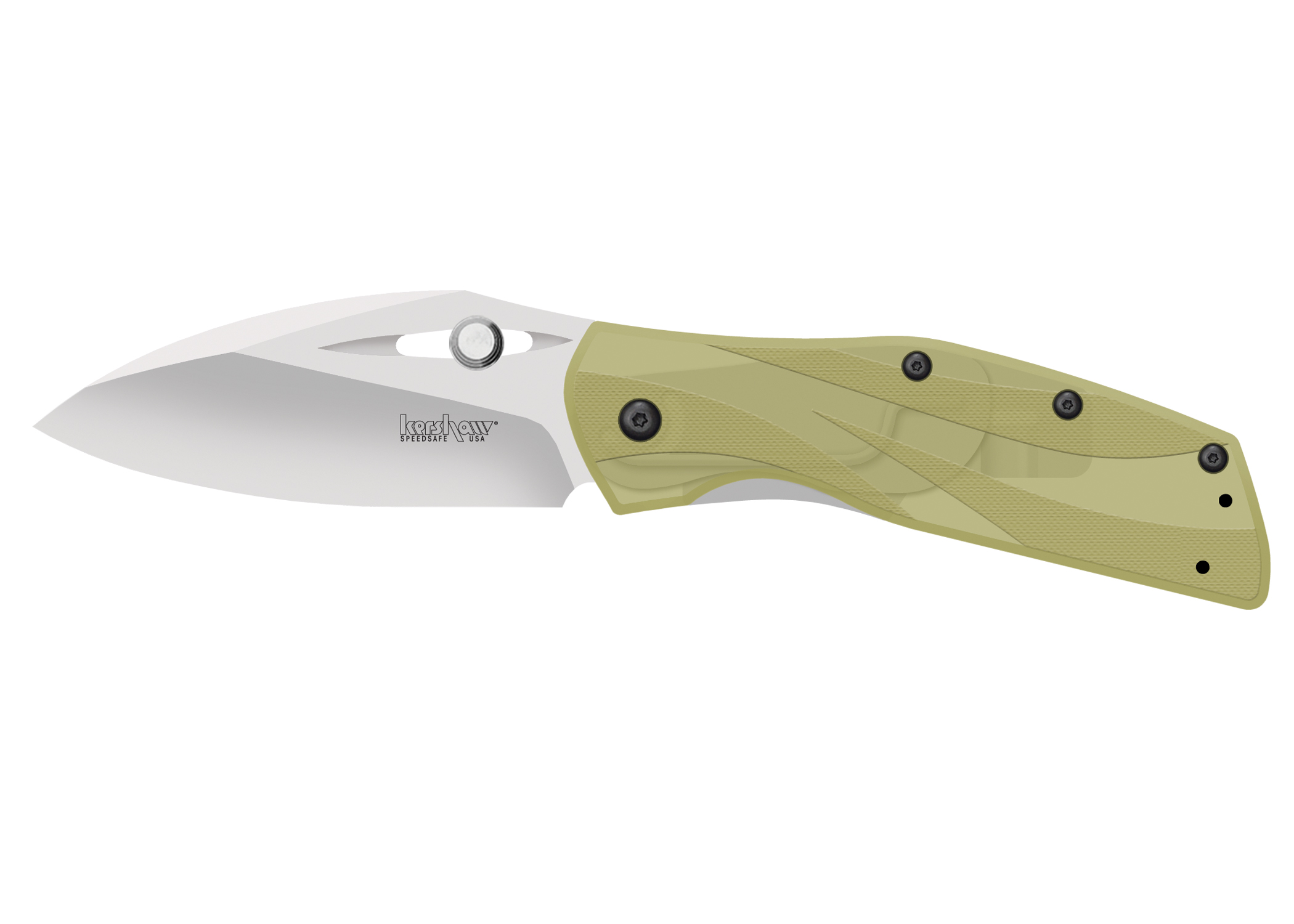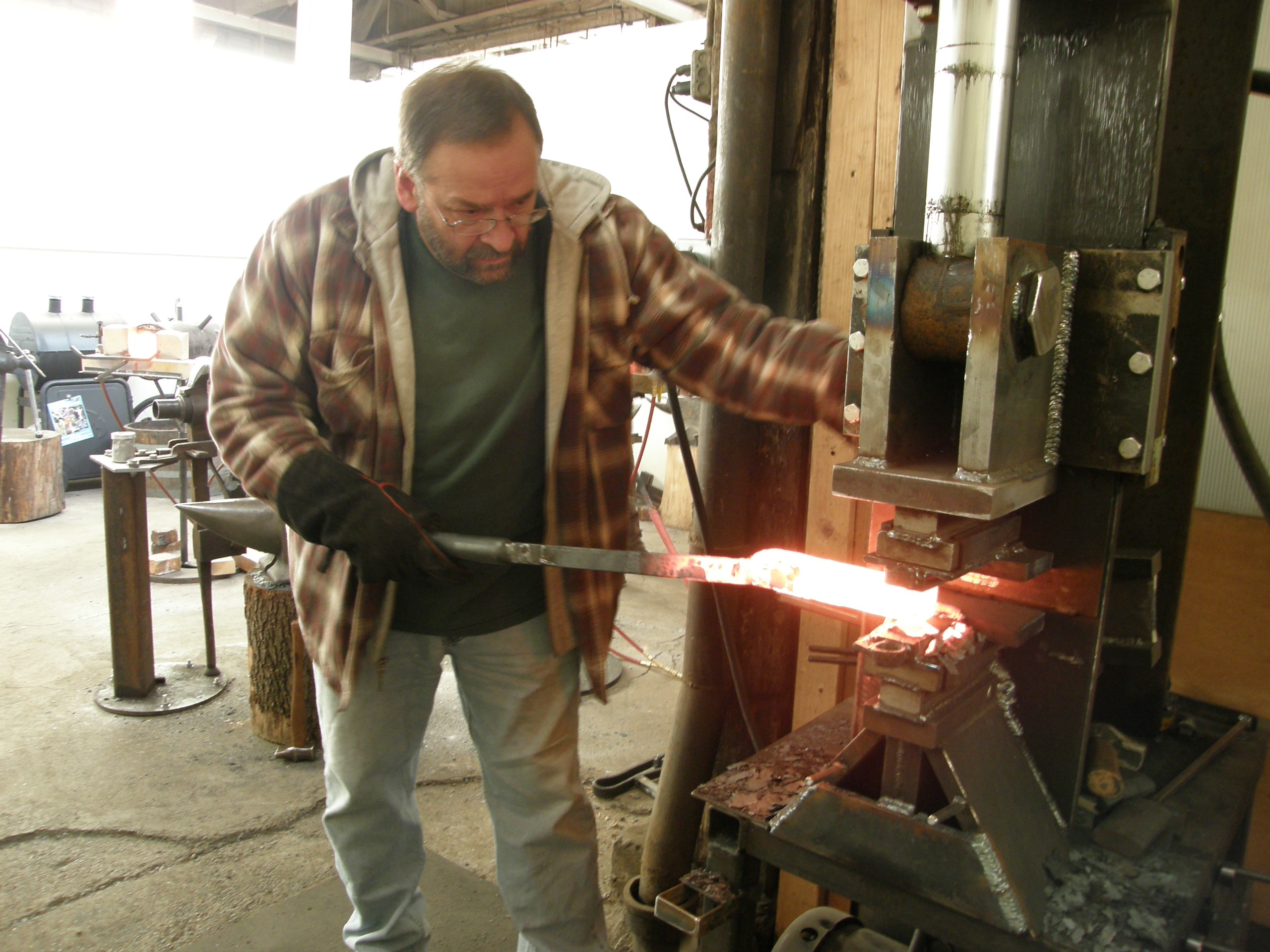 You can forge, grind, heat treat and finish a kukri at Dave Lisch’s Studio 4 Forging Facility in Seattle, Washington. (photo courtesy of Dave Lisch)
You can forge, grind, heat treat and finish a kukri at Dave Lisch’s Studio 4 Forging Facility in Seattle, Washington. (photo courtesy of Dave Lisch)
Talk to anyone in the know in the factory knife industry and he or she will tell you most of the hottest knife styles, materials, mechanisms and more seen on today’s production knives originated in the custom segment of the knife industry. In fact, with the growing amount of knifemaking learning centers and symposiums nationwide, an ever-increasing number of contemporary makers who set the trends in custom and factory knives are cutting their teeth in the schools of sharper learning. Consequently, no matter the hottest knife trends, chances are many of them come from the minds of those who teach and/or learn at today’s top knifemaking venues.
Those venues range from California to New England and many points in-between, and chances are one is near you. What’s more, each seems to offer something different, not only in subjects taught but in its overall philosophy and approach to knifemaking in general.
At the Branson Hammer-In & Knife Show in Branson, Missouri, knifemaker Gary Mulkey leaves the type of demonstration up to the demonstrator “so as to make it as enjoyable for all as possible. My goals in sponsoring this event are twofold: to provide a fun weekend for the knifemakers and to introduce new people to the world of custom knives.”
The Ashokan Seminar in Ashokan, New York, has been around as long or longer than any of them, started by the New England Bladesmith’s Guild in the early 1980s as a “non-sanctioned shadow organization.” “The sole purpose of the group is the education and improvement of the craft of knifemaking,” noted bladesmith and BLADE® contributor Tim Zowada. “With that goal in mind, the seminar is the only function of the group. There is no membership. There are no dues, nor newsletter. This lack of structure eliminates politics within the group. All the demonstrators and staff donate their time. This is a seminar covering all facets of knifemaking, taught by those with a strong desire to teach and share.”
BLADE field editor/ABS master smith Joe Szilaski’s approach at his Knife & Tomahawk Learning Center is tailored for each individual student. “My philosophy has been you will learn more if you work on the style of knife that interests you most,” he stated, “and as with most things in life, there is more than one way to skin a cat. A technique that works for one person may not work for another. I have almost 50 years experience in metalworking and am able to demonstrate several different techniques that will help the student find what method works best for him.”
Whether you want to make a knife from start to finish, focus on one or more specific techniques or knife patterns, forge steel, grind blades, inlay wire in knife handles, test knives to the brink of destruction or what have you, today’s learning centers have it. Meanwhile, some of them also conduct knife shows and auctions where you can buy and sell knives, equipment, materials and related items, and cutting competitions where you can watch the knives in action—all the while talking and trading ideas with top makers, the legends and the brightest young minds of knifemaking.
A number of the schools are located in picturesque and/or notable settings—the Moran School of Bladesmithing in historic Old Washington, Arkansas, the Batson Bladesmithing Symposium at the Tannehill Ironworks in McCalla, Alabama, and the Big Sky Country Conference near Glacier National Park in Frenchtown, Montana, to name but three—with lots of good food, local attractions, camping and/or comfortable accommodations, and good times to be had by all.
Things you should bring to each venue (if not already provided) include a notepad, pens/pencils and/or recording device, casual and work clothes, gloves, goggles, earplugs and a dust mask.
In alphabetical order, the centers of instruction are (please note in instances where dates and schedules have not been firmed up yet, past courses and instructors are listed to give you a taste of what to expect in the coming year):
Ashokan Seminar, New England Bladesmith’s Guild, Sept. 14-16, The Ashokan Seminar, Ashokan, New York
•Schedule varies (beginner to advanced level); past demonstrators include Phil Baldwin, Rick Barrett, Kevin Cashen, Delbert Ealy, Don Fogg, Rick Furrer, Jim Kelso, Dan Maragni, R.J. Martin, Jerry Rados, Jim Siska, Tim Zowada and others, all of whom donate their time “with a strong desire to teach and share”
•Casual clothing recommended; safety glasses required for demos; work clothes suggested for participating in open forge time
•Cost: $265 includes room and board (“The food is fabulous!”)
•Tim Neu (registration), Dept. BKG12, 511 Beaverkill Rd., Olivebridge, NY 12461 neuhouse511@verizon.net, or Tim Zowada (general questions) 231-348-5416 www.ashokanknifeseminar.com
Batson Bladesmithing Symposium, Knife Show, auction and cutting competition, spring, Tannehill Ironworks, McCalla, Alabama
•Past courses: Basic bladesmithing, damascus, handles and guards, folder construction, sheath making, scrimshaw and much more taught by Kevin Cashen, Wade Colter, Jim Crowell, Alex Daniels, Christoph Deringer, Rick Dunkerley, Ken Durham, Vince Evans, Jerry Fisk, Don Fogg, Rick Furrer, Wayne Goddard, Jay Hendrickson, B.R. Hughes, Joe Keeslar, Chris Marks, Charles Ochs, Mel Pardue, Al Pendray, Tim Potier, Steve Schwarzer, Devin Thomas and others; supplies, materials, knifemaking equipment and more
•Cost: Contact Jim Batson for more information
•Jim Batson, 256-971-6860 or 912-383-6776, jbbatson@knology.net
Big Sky Country Conference, July 14-15, Josh Smith’s Knife Shop, Frenchtown, Montana
•Past instructors (mid-level to highly advanced classes; everyone welcome, especially collectors;): Harvey Dean, Rick Dunkerley, Larry Fuegen, Tim Hancock, Richard Rogers, Bill Ruple, Jurgen Steinau, Owen Wood, John Young and more
•Notepad and recording devices; everything else is available there
•Cost: $185 per person, $225 per couple; includes lunch and dinner Saturday; collectors encouraged to attend the Big Sky Country Knife Show Friday before the conference; the show includes 12 top makers specially selected to attend (contact Josh for an invitation)
•Josh Smith, 406-626-5775 joshsmithknives@gmail.com, www.joshsmithknives.com
Branson Hammer-In & Knife Show and cutting competition, Sept. 29-30, The Shepherd of the Hills Farm, Branson, Missouri
•52-table knife show ($100 exhibitor table fee) runs concurrently with hammer-in both days; cutting competition on Saturday
•2011 demonstrators/courses (beginner to advanced level) included: Jim Crowell, bladesmithing hunters; Kyle Royer, bladesmithing bowies; Jerry Lairson, fitting guards; Brion Tomberlin, heat treating and ABS JS blade testing; Linda Ferguson, scrimshaw; Jason Burton, grinding a hunter blade; Bill Lyons, filework; and more
•Cost: Attendance free to the public
•Gary Mulkey, 417-348-0123, gary@mulkeyknives.com
California Hammer-in (ABS), Oct. 19-21, College of the Sequoias, Visalia, California
•Past courses/instructors (everyone welcome): Basic forging, heat treating, grinding and finishing, and handles and guards to advanced forging of complex mosaic damascus patterns and folding knife construction; also, wire inlay, filework, sheathmaking, forge design and construction, the making of wootz and tamahagane, and more; instructors Bill Burke, Jon Christensen, Rick Dunkerley, Tom Ferry, Don Fogg, Joe Keeslar, Bob Kramer, Greg Neely, Michael Vagnino, Owen Wood and others
•Bring safety glasses, ear protection and long pants, and notepads pens/pencils
•Cost: $55
•Michael Vagnino, 559-827-7802, mvknives@lightspeed.net, americanbladesmith.com
Great Smoky Mountain Bladesmithing Symposium & Knife Show, March 9-11, Haywood Community College, Clyde, North Carolina
•Bill Wiggins, 828-226-2551, wncbill@bellsouth.net
Guadalupe Forge Hammer-In & Knifemakers Rendezvous (includes a show-and-tell knife show), February and September, New Braunfels, Texas
•Past courses (everyone welcome): basic blade forging, advanced blade and damascus forging, mosaic damascus, grinding, handles and guards, mortise-tang construction, slip joints, locking liners, lockbacks, basic machining, surface grinders and pantograph mill, leather and metal sheaths, engraving basics, filework, choosing quality handle materials and more. Also Stout’s one-on-one basic, advanced and folder classes, and a tentative one on autos
•Basic tool-room attire
•Cost: $200 (noon meals included)
•Johnny Stout, 830-606-4067, Johnny@stoutknives.com or Harvey Dean, 512-446-3111
Haywood Community College (ABS), February through December, Clyde, North Carolina; campus is a designated arboretum with many “natural” classrooms in the Appalachian Mountains of Western North Carolina
•2012 demonstrators/courses: Brute de Forge, Joe Keeslar; intro to bladesmithing (2 separate courses), Greg Neely (week 1) and Jim Batson (week 2), and Bill Wiggins (night classes); handles and guards, Jim Rodebaugh; damascus (2 separate courses), Tim Potier and Steve Dunn; and spring and fall hammer-ins
•Cost: Ranges from $65 (hammer-ins) up to $850 for each course
•Howard Tew, 828-627-4667, hctew@haywood.edu, www.americanbladesmith.com
Heartland Hammer-In, Oct. 6-7, Washburn Institute of Technology, Topeka, Kansas
•Steve Culver, 785-484-0146, sculver@americanbladesmith.com
Joseph Szilaski Knife & Tomahawk Learning Center, classes year round (mostly weekends) in Joe’s 4,400-square-foot shop
•Course schedule (everyone welcome; 6 students per class): blade forging, grinding (2 days; Jim Siska assisting); hawks (5 days); locking-liner folders (4 days); also, 2-day courses in bladesmithing, grinding, handles and guards (Siska assisting), carving ivory, steel and bone, engraving and inlay, and more
•Wear good shoes and long pants w/no cuffs or nylon; hearing and eye protection (though goggles, masks, gloves and ear plugs are provided)
•Cost: Most classes $200 per day (includes materials, supplies and meals)
•Joe and Lori Szilaski, Dept. BKG12, 52 Woods Dr., Pine Plains, NY 12567 518-398-0309, Joe@Szilaski.com, www.szilaski.com
Mid-America Hammer-In, Aug. 24-26, Miami County Fairgrounds, Troy, Ohio
•Butch Sheely 419-832-5801 sheelyblades@gmail.com
New England School of Metalwork (ABS), December 2011 through November 2012, Auburn, Maine
•Course schedule (contact Dereck Glaser for levels of expertise required): basic bladesmithing and American-style tanto, Nick Rossi; simple sheathmaking; basic damascus knifemaking, Christoph Deringer; intro to Japanese sword forging, Howard Clark; damascus, J.D. Smith; intro to bladesmithing (2 separate courses; each one includes dorm and kitchen use), Jim Crowell (1 week each) and instructor to be determined; handles and guards; Brute De Forge, Joe Keeslar; summer hammer-in; and more
•Cost: Ranges from $55 (hammer-in) up to $1,000 for each course
•Dereck Glaser, 207-777-3375, dglaser@newenglanschoolmetalwork.com, www.newenglandschoolofmetalwork.com
Studio 4 Forging, dates to be announced, Seattle, Washington
•2012 demonstrators/courses: Mike Vagnino, lockback folders, 3 days; Jason Knight, kukri knife class, 3 days; David Lisch, shop rat knife, 1 day; David Lisch, in-depth damascus, 5 days; Tom Ferry, locking-liner folder class, 3 days; also, a wide range of bladesmithing classes throughout the year
•“Come get something hot and make something cool!”
•Cost: Ranges from $150 to $1,000 for each course
•David Lisch, studio4@davidlisch.com, DavidLisch.com
Texarkana College Moran School of Bladesmithing (ABS), February through October, Washington, Arkansas (venue is a replica of a one-room school house and a stable/barn)
•2012 demonstrators/courses: intro to bladesmithing (4 separate courses) by Greg Neely and Dickie Robinson, Gordon Graham, Kevin Cashen and Mike Williams, and Jim Crowell and Tim Potier; handles and guards (4 separate courses) by Dan Petersen, Roger Massey, Mike Ruth Sr., and Joe Keeslar; damascus (2 separate courses), J.R. Cook and Steve Dunn; slip joints, Wes Davis; and spring and fall hammer-ins (both at Piney Woods; contact B.R. Hughes, 903-838-0134, billrhughes@cableone.net)
•Cost: Ranges from $55 (hammer-ins) up to $850 for each course
•Debbie Bricker, 903-832-5565 ext. 3266, Deborah.Bricker@texarkanacollege.edu, www.americanbladesmith.com
Willow Bow Ranch Seminars, instruction offered pretty much year round, Riverton, Wyoming
•Courses (no experience necessary): Each student forges, heat treats and grinds a high-performance blade of 52100 or 5160 steel and tests it for cutting and toughness, with close to a week necessary to complete one blade; etching; advanced seminars on handles and guards and sheaths available on request; Ed Fowler and Chris Amos, instructors (both one-on-two and one-on-one instruction available when possible)
•Wear cotton shirts and pants; bring glove/gloves, shop apron if you use one, safety glasses, earplugs and your favorite hammer
•Cost: Contact Ed Fowler for more information
•Ed Fowler, 307-856-9815
Youth Hammer-In (ABS), June (dates to be announced), Smoky Mountain Knife Works, Sevierville, Tennessee
•Contact Houston Price, 865-397-0053, choustonprice@att.net
For more on the latest knives, knifemaking instruction, knife trends, knifemakers, what knives to buy and where and much more, subscribe to BLADE® Magazine, the World’s No. 1 Knife Publication. For subscription information click on http://www.shopblade.com/product/blade-magazine-one-year-subscription-us/?r+ssfb060112#BL1SU



